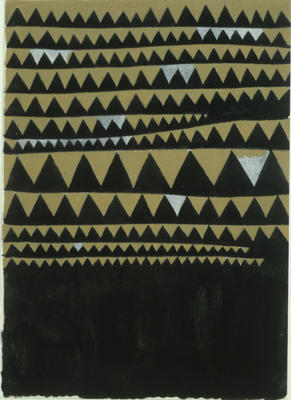Painting H
-
Gordon Walters
b.1919
d.1995

Title
Painting H
Details
| Production Date | 1975 |
|---|---|
| Collection(s) | Collection Govett-Brewster Art Gallery, New Plymouth |
| Accession Number | 80/54 |
| Media | Oil on canvas |
| Measurements | 915 x 915mm |
About
Gordon Walters was a painter of uncompromising clarity. While best known for his seminal ‘koru’ series, Walters also thoroughly explored an extraordinary range of possibilities in abstract painting during his 60-year career. Drawing from sources as diverse as ancient Māori rock drawings, European developments in abstract painting and his own professional experience as a graphic designer, Walters developed a body of work that is testament to his meticulous and inquisitive artistic style.
Painting H was produced at a time in Walters’ career when he was seeking to refine and consolidate advances he had made in his art. Having already reduced his paintings down to a limited range of forms and colours, Walters now eliminated any extraneous elements. The simplicity of Painting H’s two-colour palette and the austerity of its design speak of a calculated examination of pure painterly relationships; the relationship of positive and negative space, figure and background, dark and light. Precisely split into two halves, the painting presents a balanced opposition. Neither half can be read without the other; neither is allowed to assume priority. The soft mauve and the white crisply delineate each other, both can equally be seen as figure and background.
The restraint Walters shows in Painting H can be linked to a long tradition of painters who have attempted to eliminate unnecessary detail in their works. European painters such as Auguste Herbin and Piet Mondrian, both of whom Walters admired, sought to strip their works back to their essential components in order to reveal the underlying mechanics of picture-making. For Walters, the analysis of a pure binary relationship undertaken in Painting H can be considered of great importance in his artistic development. The economy and control he exhibited here is reflected in the sharp focus and graphic strength of later works.


